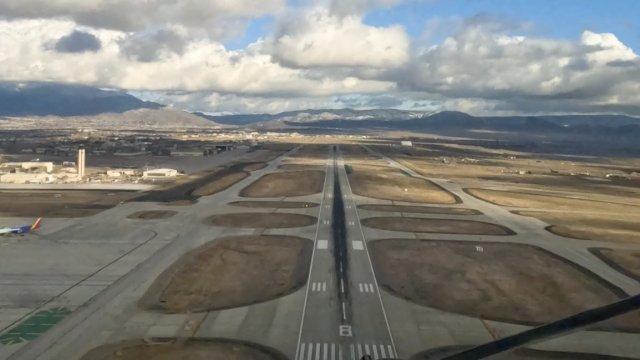A Scripps News investigation showed how the Federal Aviation Administration quietly stopped pursuing technology in 2007 that proved capable of automatically warning pilots in danger of an imminent collision on an airport runway.
Scripps News has also discovered that many commercial planes are likely not using other runway safety alert systems that have been available for years.
The software may even be included on flight decks of newer planes, but not activated.
The National Transportation Safety Board has been calling for the FAA to require in-cockpit runway safety alerts since July 2000.
The systems help pilots navigate during the taxi, takeoff and landing phases of a flight.
The NTSB ramped up its push for the technology after the August 2006 crash of Delta Comair flight 5191 in Lexington, Kentucky.
The plane's pilots mistakenly attempted to take off from a short runway, failing to get enough lift before the aircraft slammed into trees and a perimeter fence, killing 49 of the 50 people on board.
A report from the NTSB’s investigation of the crash noted, “These technologies have not been mandated despite their demonstrated safety benefits.”
SEE MORE: Boeing passenger plane's nose wheel falls off just before takeoff
Years later, there is still no FAA requirement for the safety feature despite rising concerns that busier airports and a shortage of air traffic controllers are leading to a growing number of serious incidents on this nation’s runways.
To get a closer look at existing runway safety systems, Scripps News boarded a test flight at Sky Harbor International Airport in Phoenix alongside Joe Duval, director of flight test operations at Honeywell Aerospace Technologies, one of the companies that has developed some of the technology on the market.
The pilots in the cockpit put the plane through scenarios that triggered runway warnings on the flight deck.
The captain began accelerating down a taxiway, instead of the correct runway, to simulate an error like the one that doomed the Delta Comair flight in Kentucky.
An alarm quickly sounded: “Caution! On taxiway! On taxiway!”
“It's a situation that we've seen in aviation and we're trying to prevent it from happening,” Duval said. “So we're alerting a pilot that they're trying to take off from something other than the runway.”
The software on board also is designed to prevent a plane from landing in the wrong place, or flying toward a runway on final approach too high or too fast.
When pilots on the test plane deliberately head toward an airport at an elevated altitude and speed, an alert blares in the cockpit: “Long landing! Long landing!”
The message gives the crew time to go around the airport to try landing again.
SEE MORE: United Airlines may look for alternatives to Boeing jets, CEO says
Runway safety software like this has been available for use on commercial airplanes for years.
Honeywell said virtually all new commercial planes built by industry giants Airbus and Boeing have included some form of these alert features since 2015, but the systems often are not activated by individual airlines.
“It's a process in terms of upgrading it on the aircraft,” said Jim Currier, president and CEO of Honeywell Aerospace Technologies. “There's a cost to include these features and functions onto an aircraft system.”
Currier declined to provide the exact price tag, but ballparked it in the tens of thousands of dollars per aircraft.
“It depends on the system, it depends on the features,” Currier said.
For a major airline with a fleet of about a thousand planes, that cost can quickly balloon.
The FAA declined a request for an interview and did not reply to written questions about why the agency does not require runway safety systems in the cockpit as the NTSB has said to do.
Randy Babbitt, who led the FAA during part of the Obama administration, defended the agency for not moving faster.
“Can we do it? Yeah. Can we do it fast enough? No,” Babbitt said, adding that the FAA must consider how any new safety feature can be integrated across the entire aviation system coast to coast.
“They weigh all of those things when they make those decisions,” Babbitt said. “The NTSB can suggest anything they want. There's no requirement that it's practical, legal, affordable. None of that comes into their realm.”
Babbitt said the FAA likely will eventually require cockpit runway safety alerts as the software gets more advanced and less expensive.
“The technology is racing forward,” Babbitt said. “You're going to have to decide what it is you're going to use and how are you going to use it. You want to do it right the first time.”
Honeywell said it is preparing to gradually roll out an even more advanced safety system that’s able to directly warn flight crews about an imminent collision on the ground, like safety systems already do for planes in the air.
But as the previous technology has shown, years can pass before a new system like this is standard on commercial planes.
"The number of incidents that have occurred, near-misses that have occurred, have heightened the awareness level,” Currier said. “Those incidences are increasing to a point where it has created, now, alarm bells to be sounded.”
Trending stories at Scrippsnews.com



